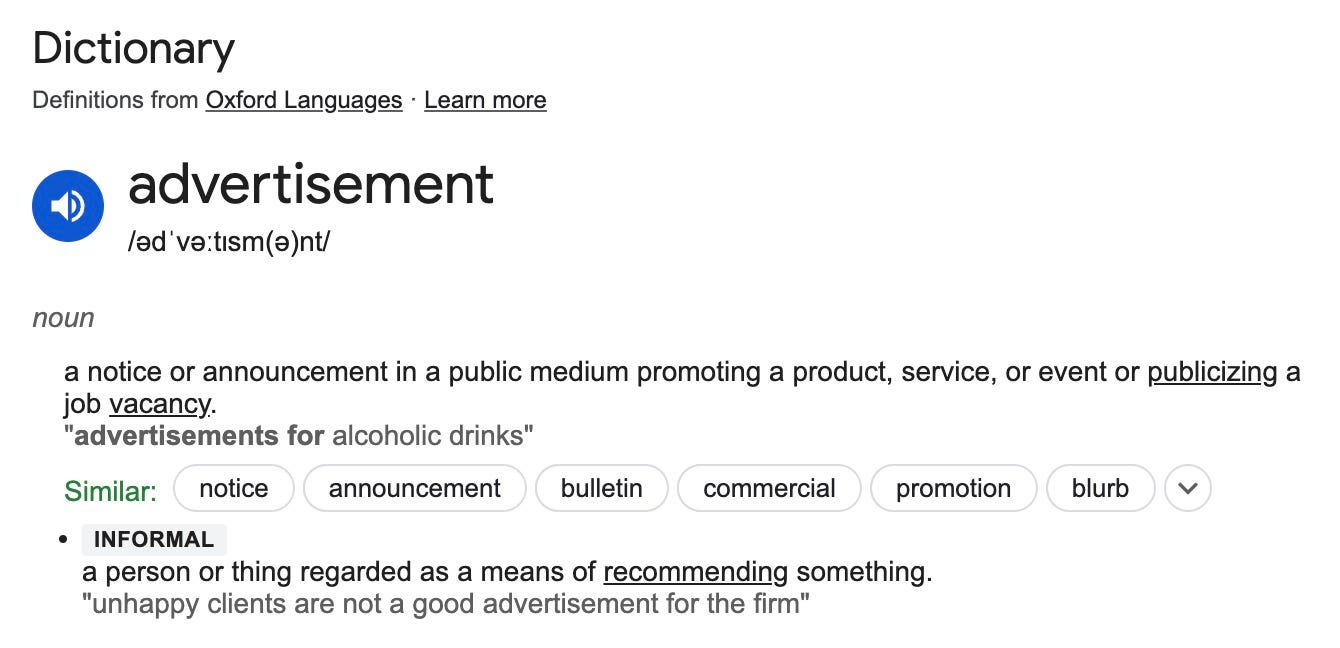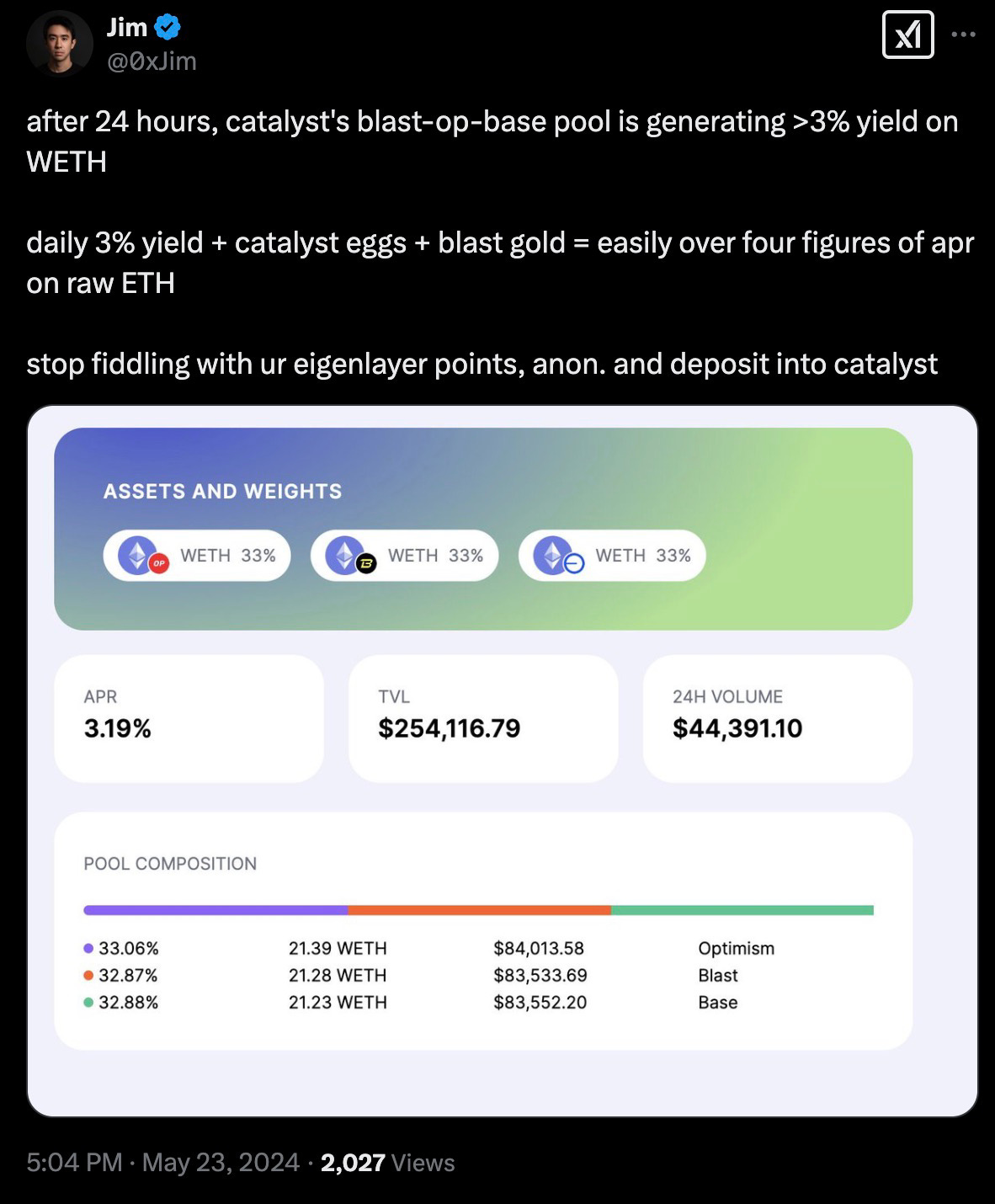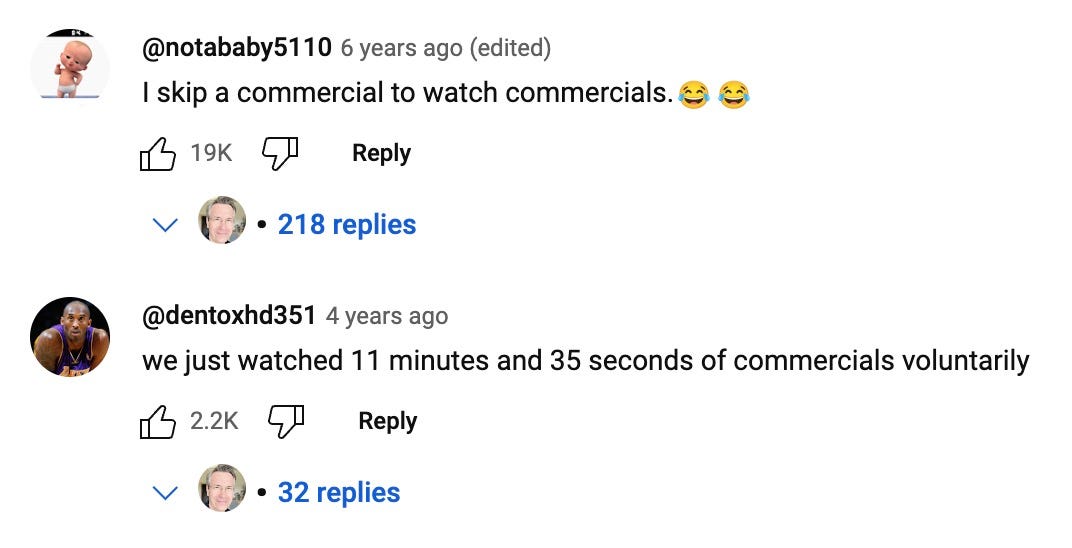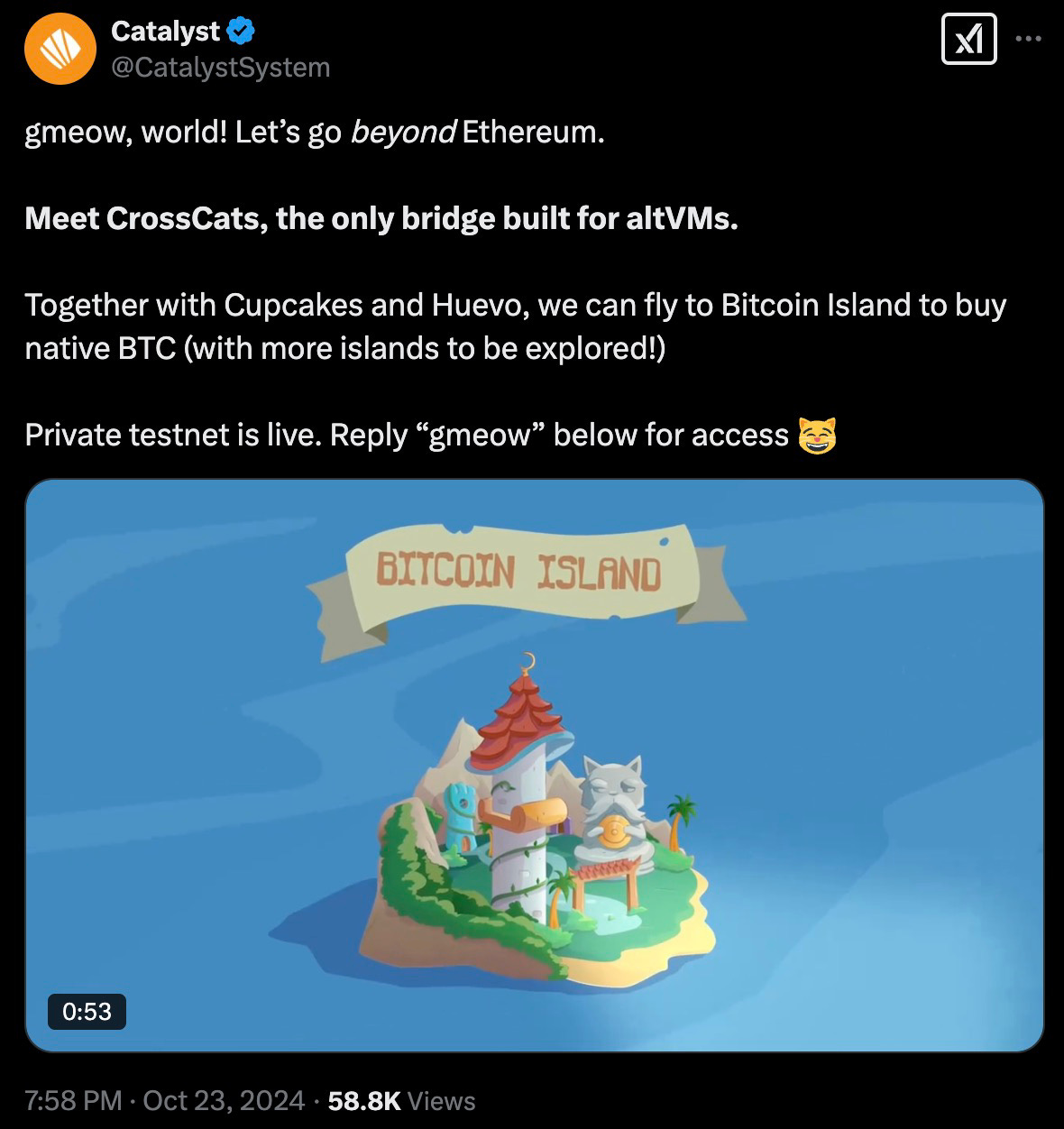Think of the last time you saw an ad.
You were probably tired, brain fully off, and ready to watch a really nice cooking video on YouTube — when you get a 90 second ad about laundry detergent or some shit.
Or maybe, you were listening to a really helpful podcast when you get hit with a “—and now a word from our sponsors”.
Your whole body tenses up, your heart rate goes up and you frantically mash Skip Ad as fast as humanly possible.
We all do this. And we've always done this. Since the first merchant shouted about their goods in the town square, people have always been bombarded with ads and have always ignored them.
So if we all agree that ads suck… then why do you think people will like yours?
“But Jim, I don’t make any ads?” I hear you ask.
But my sweet summer child — you do.
An ad is defined as an “announcement in public promoting a product”.
Therefore, every time you tweet about your project, that’s an ad.
And yet, most founders keep making the same mistake.
They think founder-led marketing is talking about their project on Twitter, so they keep inundating us with ads on the timeline, and they keep getting ignored. They yap their brains out for a week, realise that they’re getting no engagement, and eventually quit. (And no — it’s not the “algorithm’s fault.”)
When I first launched Catalyst, I made the same exact mistake.
I shilled my product relentlessly, and — understandably — no one gave a shit.
It sucks to put a lot of effort into a tweet and have it completely ignored.
I wanted to quit Twitter altogether, and just focus on being a good PM for Catalyst.
During work, I’d context switch between writing user requirements for features and crafting tweets. And somehow the two melded together in my brain, and it finally clicked for me:
I needed to stop thinking like a marketer, and start thinking like a product manager. I needed to take a user-centric view, and make tweets that solved problems for my “users” (followers).
That's when I finally cracked the code on founder-led marketing.
Be the PM of your content
A product manager is the “voice of the user” — understanding their needs and pain points and making sure that the product delights users.
Being the PM of your content means knowing your followers really well and giving them what they want.
Think about it: why do people go on Crypto Twitter? They're either trying (1) to make their lives better, or (2) to entertain themselves.
For #1, they hope they’ll maybe find some alpha in the timeline (those poor souls) to trade on. Or maybe it’s #2, they’re tired after a long day of losing money, and they just want to laugh away their pain.
That’s the type of content you need to make. Bonus points if you do both at the same time!
Your content is either helpful, entertaining, or it's shit.
And this is where most founders fuck up — they can't suppress their urge to shill their product. Instead of thinking "what do my followers want?", they're thinking "how can I tell everyone how great my product is?"
Let me show you how this works with my own content:
I try to be (1) helpful by writing about my experiences as a founder (like this article!)
And (2) entertaining by being open about my disdain for the state of crypto and the existential dread that I experience every day for dedicating my entire career to this clown industry.
Coincidentally, those are the two types of content that perform the best for me!
Of course — I can’t just tweet about random stuff all the time. I need to tie it back to my project, because I have adoption metrics to hit and a company to keep alive. Otherwise, my teammates and my investors would wonder what the fuck I did all day.
This brings us to the million-dollar question: how do you balance providing value with promoting your product?
I've found there are two key principles to make promotional content actually land:
(1) If you must shill, do it with restraint.
There actually is a very well-studied “correct” ratio for how to balance shilling vs not (sometimes called the give-and-ask ratio).
Look at TV: there’s approximately 13 minutes of ads for every 60 minutes of scheduled air time. So basically a 2:7 ratio of shilling vs not (13/(60 - 13) for the math-no-gud people).
Facebook is slightly less aggressive, where they show 1 ad for every 4 posts, so a 1:4 shilling vs not ratio.
For Twitter and especially a schizo crowd like CT, I personally over-index on not shilling. I do a 1:9 ratio, so 10% of my content are ads, and 90% of my content is just giving people value.
But just knowing when to shill doesn't mean shit if your shilling sucks. The real secret is how you do it.
(2) If you must shill, do it tastefully.
My favourite ads don’t even feel like ads.
My favourites ads are funny — like Duolingo commenting on the Mavs trade or their Super Bowl ad. Or they make me cry like this this unofficial Nintendo Ad. Or they’re so random and weird that I’m literally obligated to share them with my friends.
The best ads are entertaining. So entertaining that people forget that they’re being sold to. So entertaining and they are willing to spend their free time watching highlight reels of ads on YouTube:
So how do you do that?
Take the PM approach again — what do your users actually like?
If you don't have any data, just start with what you like as a baseline. Chances are, if you're building something B2C, you're probably similar to your users anyway.
Here's what I did with CrossCats:
I noticed our Discord was filled with cat memes. And I grew up watching Adventure Time, so we just morphed those together and made Cupcakes and squad:
Good founder marketing in action
But frankly, I’m nowhere near the gold standard of good “founder-led marketing” founders (I need to find a better word for this, but we’ll call it FLMF for now), so let’s look at better founders do this right.
Before we start, one important thing to note: do NOT try to replicate what success founders are currently doing. They’ve already hit a flywheel where they can literally post anything that it’ll blow up.
Posting cryptic one-liners to build hype only works if you already have an established following.
Instead, look at posts that worked when they were less known.
I think the most common thing that really good FLMFs do is have an opinion on current metas and tie it back to what they’re building. So they’re basically providing value while shilling at the same time.
Look at Rushi — he got big by writing longer, thoughtful posts about why Move mattered in the context of trends like parallelisation and inscriptions:
David also comments on the existing meta of ETH Denver and ties it back to Jokerace.
Keone does the same strategy as me — documenting his learnings from building Monad and his time at Jump, from hiring to building community:
Have the dog in you
Hopefully, this takes out the guesswork out of how to make good content as a founder — so you’re not wasting time posting things that no one cares about.
But knowledge alone does not equal results.
If you truly want to be good at founder-led marketing, then you have to stay consistent. This is an absolute grind where results do not come overnight.
If you don’t believe me, turn on notifications for all the people I highlighted. They tweet high quality posts, multiple times per day.
Go look at Smokey’s first tweet. He’s been saying the same thing over and over again for years before finding success.
Don’t think of this as a 1-week, or even a 1-month task, and then you can go back to your normal routine. This is a new habit that you need to form — a daily commitment for hours per week, for years.
And if you do put in the work, you'll be rewarded. With a strong public brand, everything becomes easier: hiring, partnerships, fundraising.
If this sounds like too much work for you, simply understand that this is what you need to do to be great. No shortcuts. Not everyone can be great because not everyone can put in the work.
If you want it badly enough, you’ll do it.













